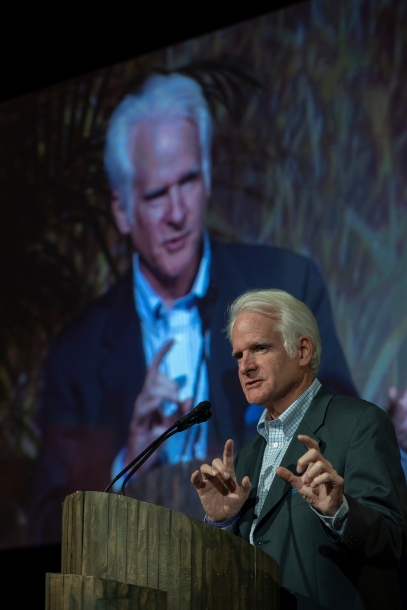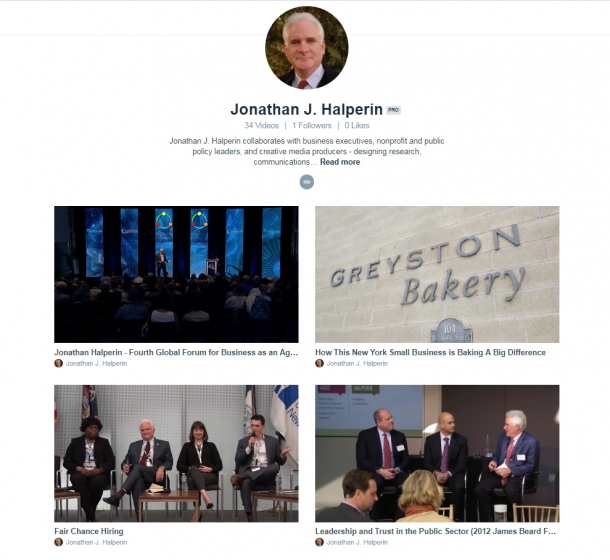You are here
Sustainable Living or Survival of the Fittest?
This year’s CERES conference in Boston was provocative and challenging -- as it should be in celebration of 25 years of creative, innovative, and collaborative advocacy to bring greater openness and accountability to corporate behavior. And it is behavior, of course, that needs to change; openness and accountability are only the tools of the trade in modifying corporate practices.
Paul Gilding, perhaps the speaker who made the audience most usefully uncomfortable, painted two competing visions of the future. One, the Unilever Sustainable Living Plan, champions collaboration, aggressive sustainable agriculture practices, and a fundamental reorientation toward attempting to do more with less, continuing to grow and expand but with an increasingly limited footprint. Gilding also celebrated the clarity with which ExxonMobil has now articulated a different vision of a global economy driven by aggressive use of fossil fuels, where lack of climate stability is seen as a cost of business as usual, and within which ExxonMobil’s rightly vaunted discipline in execution is seen as its competitive trump card in a go-it-alone world.
While perhaps overstated a bit, I concur with his fundamental view, having served as a consultant to both Unilever and ExxonMobil -- although the engagement with ExxonMobil was abruptly ‘paused’ due to differing visions of what constitutes responsible behavior around climate change. Unless the most esteemed international scientists have it all wrong, the two competing visions of the world are pretty stark. If we push past an overall global increase of temperature beyond 2°C, the natural ecosystems that have evolved into a relatively stable and hospitable climate for our species are going to shift dramatically. And if the work commissioned by the US Department of Defense some years ago from the Global Business Network (run by Peter Schwartz, long-time scenario planning chief at Shell) is right, then we may be looking at abrupt rather than gradual changes in the global climate.
As with much change, wealth provides insulation. Resources can be mobilized to plan, defend, and identify alternatives when threats present themselves. But walled castles, cities, communities, and nations have a way of failing over time. While perhaps splendid in their isolation during their halcyon days, they also are brittle. Sea walls may be the Maginot line of the 21st century.
But there is a point at which the dynamic of “growing concentration of wealth and increased dispersal of political power” sends tremors through both markets and governments. And this was articulated well at CERES by Mary O’Malley from Prudential, an insurance company that knows a thing or two about risk.
While no one at the CERES conference was counseling the need to abandon ship, many stressed that business as usual is no longer tenable. From Roderick Morris at Opower to Rob Olson, Chief Financial Officer at IKEA US, the resounding message was to get ready for rough sailing into a vast sea of change. And those outfitted properly for the voyage stand to reap vast rewards. As Morris rightly noted, it is an invitation to innovate when the market presents a situation where “energy and water are cheap and saving them is boring.”
From Olson at IKEA, we were reminded that preparing for this new era requires flexibility and leadership to change traditional thinking. For decades companies have forsworn adjusting hurdle rate (return on investment targets) to accommodate viable sustainability projects that will bring long term value to stockholders, but by definition take longer to mature. IKEA has wisely adjusted hurdle rates outward from 8-10 years or in some cases to as far out as 25 years for critical sustainability investments.
Twenty-five years is 100 quarterly statements and 100 calls with Wall Street analysts. Few business leaders here today will be on those calls – and we generally lack bandwidth, systems, governance, and management capacity to manage out twenty-five years. But who among our business leaders today is planning for their companies to be out of business in twenty-five years? To survive, business leaders need to stop waiting for analysts to ask questions on those quarterly calls about the painstakingly compiled sustainability reports – and instead start actively presenting sustainability as core to the long-term generation of value for investors.
Leaders hesitant to make the case for sustainability as a core business mission and companies with a culture of complacency about their market position would do well to remember the fate of iconic brands that also “missed the memo” on change: Blockbuster Video, Borders, Polaroid. Who’s next?
Dismayed by one IPCC report after another (each showing with ever increasing certainty that the global climate is become more and more unstable), reading a steady flow of nerve-racking news from Ukraine, wincing at the stories of horrific abuse in Nigeria and Sudan, and still hoping for a more robust economic recovery -- it is useful to reflect on the powerful examples where hope and hard-work have combined to overcame seemingly overwhelming odds. Mary Robinson, the former President of Ireland and no longer the youngest member of the The Elders organized by Nelson Mandela, reminded us all of how Archbishop Desmond Tutu response to a question from a journalists about how he remains an optimist in the face of crushing hardship: “I’m not an optimist. I am a prisoner of hope.”
- jonathan.halperin's blog
- Log in or register to post comments

